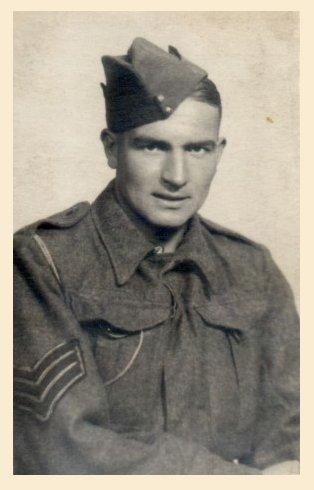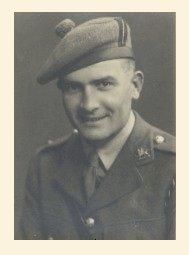


Being asked by the Research and Broadcasting Center of Breton Identity, of Saint-Nazaire (CREDIB), David Tait wrote a short biography of his uncle Morgan Jenkins. This courageous Welsh soldier gave his life for Freedom. During the Saint-Nazaire Raid on March 28th, 1942, he fell while fighting, at 27, on Breton land. The CREDIB, on behalf of all the Breton grateful for so many Braves' sacrifice during this raid, was eager to publish
Being asked by Research and Broadcasting Center of Breton Identity, of Saint-Nazaire (CREDIB), David Tait wrote a short biography of his uncle Morgan Jenkins. This courageous Welsh soldier gave his life for Freedom. During the [St Nazaire Raid] (or Operation Chariot) on March 28th, 1942, he fell while fighting, on Breton land.
The CREDIB, on behalf of all Bretons grateful for so many Braves' sacrifice during this raid, was eager to publish on his website, this modest tribute to Morgan Jenkins. Trugarez bras deoc'h, Morgan.
My Uncle, Morgan Jenkins
Born in 1915, Morgan was the sixth of seven children born to Morgan and Mary Jenkins . His father was a plate layer at the Ynisfaoi Mine, Treherbert, South Wales. Morgan attended local schools in his younger years. Being a bright pupil he achieved a place at Brecon Boy's County Grammar School for his secondary education. Morgan's death at Saint-Nazaire is recorded on the School's War Memorial.
This was the time of the Great Depression and, following his leaving school, Morgan, with many of his family moved to London to secure work. Unfortunately, due to all of Morgan's immediate relatives having since died, I have little information on this period of his life. However, Morgan's military record shows that he was a buyer for what I believe to have been a wholesale drapery company when he joined the Territorial Army (The T.A.). I should explain that in the United Kingdom the Territorial Army is voluntary and for civilians who wish to take military training during evenings, weekends and holiday periods.
Morgan joined the London Rifle Brigade of the T.A. in 1937 when it began to appear that war with Germany was possibly on the horizon. At the outbreak of war he joined the Army. Over the next five months he was promoted from Private to Sergeant. In April 1940 Morgan was posted to the N° 5 Independent Company and joined them, with French and Polish troops, on the ill-fated operation in Norway. He subsequently returned in June 1940. Following his return he was posted to the N° 1 Special Services Battalion, which in turn became part of the newly formed Commando Force.
In August 1940 Morgan married Doris Pooley. Morgan was now part of N° 2 Commando commanded by Charles Newman. Clearly Newman had a high regard for Morgan and arranged for him to be promoted from the ranks to 2nd Lieutenant, Welsh Regiment.
I understand Morgan revelled in the Commandos, where a man was judged by his skills and courage rather than his family history or which school he attended. His Captain, Michael Burn
A British-American team filming in Sant-Nazer about Mick Burn's life
Whilst discipline within the Commandos was more relaxed than might be expected within the army, training was exceptionally hard and only the most proficient were retained. Much of the training took place in the West of Scotland. Morgan could perhaps be over zealous for Peter Stanley recounts in his book Commando to Colditz that on refusing to be captured during a training exercise, Morgan was inadvertently shot in the thigh by the opposing team. I was not aware of this previously.
The Commandos waited, not always patiently, for action, and finally it arrived with the raid on Saint-Nazaire. As is well known the prime object of the raid was to destroy the caissons of the [Louis Joubert Lock] and associated machinery. Additionally, Commandos were to destroy the bridges linking the town of Saint-Nazaire with the dock area.
Morgan's role was to lead a troop of men to defend the party designated to destroy the Pont de la Douane. The majority of Commandos were transported to Saint-Nazaire by small wooden motor launches, ML. Morgan was being carried by vessel ML 268 and on its approach to the Ancienne Entrée it was struck by German fire. ML 268 burst into flames and exploded, resulting, unfortunately, in Morgan and his men being killed.
Of the five, three are buried at La Baule-Escoublac Cemetery. Two, including Morgan, have no known grave, but whose deaths are recorded on the Brookwood Memorial, Brookwood Military Cemetery, Surrey, England.
David Tait, may 2010
See http://credibsantnazer.hautetfort.com/ of the CREDIB. On July 6th, 2010.

Commentaires (0)
Aucun commentaire pour le moment. Soyez le premier à réagir !